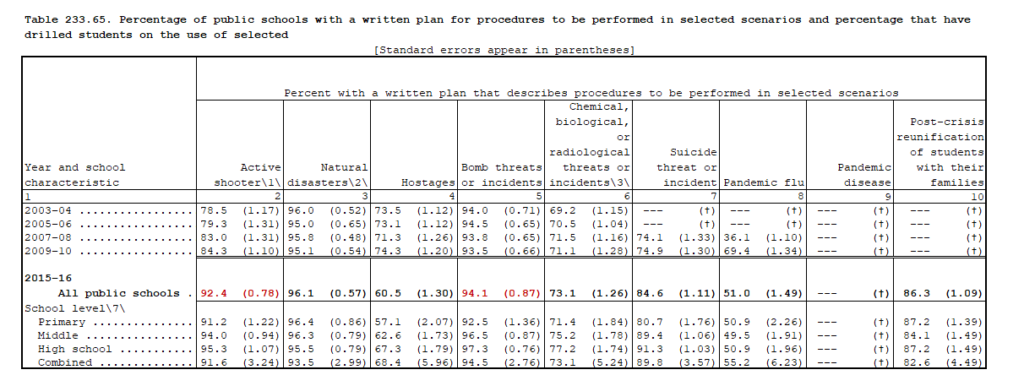
If you’ve ever had to figure out what technology products to buy for your school security system, you know how hard it can be.
There are thousands of products to choose from, and figuring out which solution is most effective can be a confusing and painful process.
Plus, this is a high-stakes game. A wrong choice can make your security system far more costly and difficult to operate.
So, how can you avoid those headaches and make the right purchasing choice?
Ask yourself the following questions before you buy:
01. Can I do what I want with what I already have?
This is the most important and fundamental question that you can ask yourself before you purchase a new technology solution.
While it’s possible that your equipment is evenly and appropriately distributed throughout your campus, it’s possible that you have overlapping camera coverage or access control solutions in places where you don’t actually need them.
It may be possible to review your existing equipment and reallocate devices to fill a need.
There are also districts, who through time, have lost sight of all the security devices they own. They aren’t 100 percent sure of counts, levels of operability, or where their devices are located. A security assessment is a good first step to answering those questions.
Before you pull the trigger on a big purchase, see if it’s possible to do what you want to do with your existing technology.
02. Do I need to introduce a new brand or an outside solution to accomplish my long-term goals?
The increasing investment that schools are making to secure their students, staff, visitors and campuses is being met by a large and growing community of vendors with sophisticated new products eager to address this opportunity. With so mnay choices, It’s easy to become confused or make shortsighted decisions.
Before adding new manufacturer brands or solutions, it’s important to consider your current situation, the networking implications of that new solution, and whether your existing hardware is aligned with your long-term goals.
Most schools are already equipped with hundreds of security-related devices to control access, increase visibility, and reduce risk.
For example, if you’re one of the 95% of schools that control access to buildings during school hours, you already have a solution in place to solve this problem.

But, as with every purchase, it’s important to keep your long-term goals in mind. If your current solution is working but can’t scale with your needs, evaluating a different solution may be the best option available.
In that scenario, it’s best to plan carefully and create consistency in new purchases so that, when your upgrades are complete, your entire system connects and works well together.
03. What brands work well with my existing technology?
In a previous article, we talked about standardizing your school technology and why it matters. Overall, standardization practices help to lower maintenance costs and create a more holistic security solution.
More importantly, standardization helps you eliminate the use of competing, similar products.
Why use five separate camera brands when you can use one brand and achieve similar results?
Standardization tactics make it easier for your team to manage and maintain your system because it reduces confusion and ambiguity related to training and helps keep things running smoothly.
Before introducing new products to solve a problem, be sure to explore how those brands will interact with your existing technology.
If the new devices or software are incompatible with current systems, going ahead with that purchase could lead to networking and maintenance headaches that plague your system for years to come.
04. How easy will it be to integrate this solution?
Eventually, you will need to introduce a new solution to your technology lineup. When that happens, take the time to discover how easy it will be to integrate the new system with your current network and infrastructure.
In order to get the most bang for your buck, consider all aspects of the technology before you buy — including asking how the solution you’re vetting integrates with other security systems you currently have or might have in the future, and what are the possible implications your team could encounter when deploying and/or programming the solution into your current system.
It’s easy to make a purchase on an impulse without taking the time to familiarize yourself with the work involved to make certain technologies viable. This approach typically leads to issues down the road but more importantly, it wastes dollars and time.
05. Is this technology open and extendable?
Modern technology systems are more interconnected than ever before, and you don’t have to be an expert to get the most out of this newfound flexibility.
When faced with a technology choice, we recommend purchasing products that can be easily extended and that are widely compatible with other hardware and software solutions.
This is called open architecture, and we’re a big proponent of those solutions at 3Sixty Integrated.
Overall, solutions that support open architecture are easier to upgrade, replace, and extend. Products in this category may be modular to improve upgradability or have multiple ports and a wide range of network compatibility.
What does this mean for you?
Choosing these open-ended solutions means that your hardware is more versatile and much easier to adapt to future needs.
Some brands require specialized equipment and replacement parts, which makes them difficult to repair, expand, or extend. These systems are designed to lock you into a specific technology ecosystem.
As long as you’re using the manufacturer’s product, everything works well. If you ever need an alternative solution — potentially one that the manufacturer doesn’t provide — you’ll immediately encounter difficulties.
On the whole, closed systems tend to drive up costs and limit how you can expand your system in the future, which is why it’s critical to factor for this when selecting new technology.
06. Will my team have difficulty operating this technology?
When deciding what technology choices will work best for your campus or district, it’s important to factor in how those systems are designed to work with your operational policies and procedures.
Security plays a big role in policies around violence, bullying, threat assessment, and more.
According to the NCES, 92% of schools currently have a written plan in place for active shooters. 94% have something in place for bomb threats and similar incidents.

Before implementing new technology, consider how your solution may impact your current strategies for dealing with security challenges.
There is nothing worse than an operator error during a major security event. Your system could provide the information you need, but your team lacks the knowledge, skill, or access required to fully operate your technology.
While many of these factors can be resolved with user training, some systems are inherently more difficult to operate than others. System incompatibility can lead to network errors. Software that is unnecessarily complex can slow down data collection and response times.
When choosing the right technology, be sure to take the operational abilities of your team and your school processes into account. Keep in mind that every new piece of hardware or software is another piece of knowledge that needs to be trained and constantly refreshed.
Right technology. Right brands. Right partners.
So far, we’ve talked a lot about choosing the right technology and working with the right brands.
But that’s not the whole story.
You also need the right partners to help you bring your entire technology solution together. For many ISDs across Texas, 3Sixty Integrated is that ideal partner.
We follow a consistent and transparent integration process designed to keep you in the driver’s seat from start to finish.
If it’s time to rethink your security strategy, we’re happy to help. Click here to schedule a consultation with our team.

